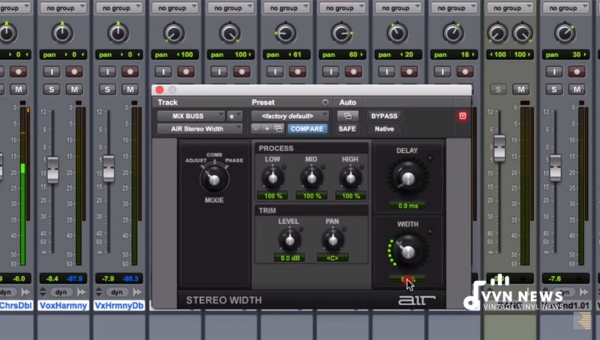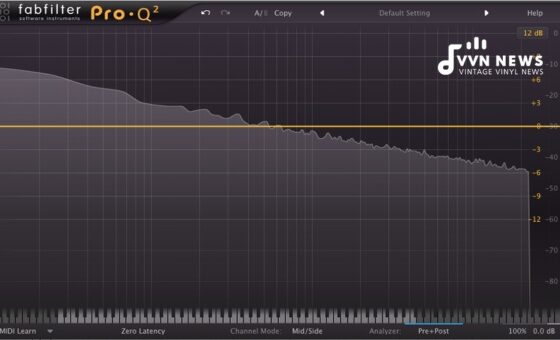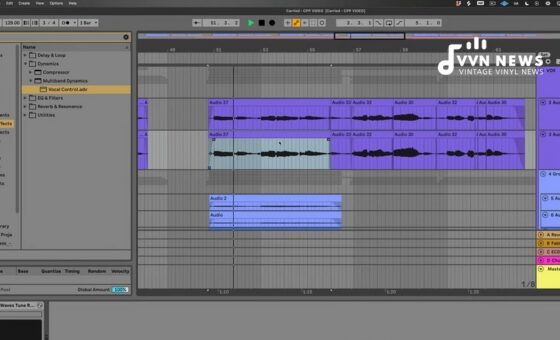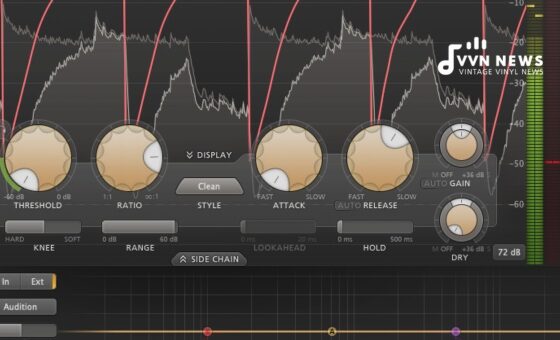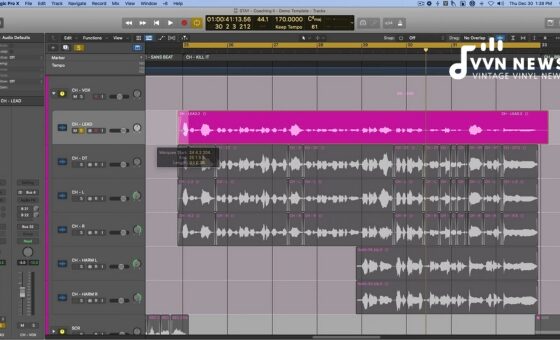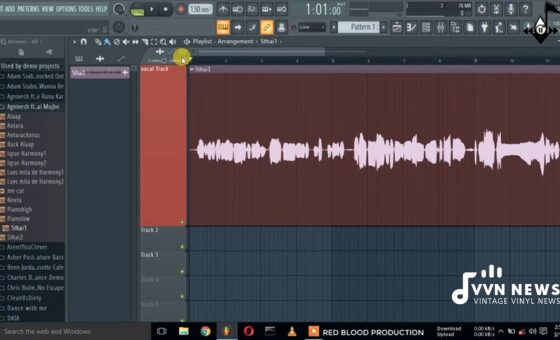The first time I encountered the concept of “Mixing In Mono,” I was equally confused and intrigued.
How could reducing a sound’s field to a singular point provide any benefit at all? Isn’t the richness of stereo sound, with its ability to simulate the way humans naturally hear, always superior?
As it turns out, I couldn’t have been more wrong. Mono is far more than an antiquated format; in fact, it forms a crucial stage in modern music production that can highlight issues often masked by stereo playback.
Mixing in mono can be a difficult concept for many to wrap their head around, particularly if you’re just getting started in the world of audio production.
Contrary to our natural tendencies to enjoy music as a broad audible soundscape, delving into the condensed perspective offered by mono mixes opens up entirely new avenues for critique and adjustment.
In music mixing and mastering, mono isn’t just useful; it’s indispensable.
What is a Mono Mix?
A Mono Mix refers to sound reproduction where all sounds are funneled through a singular channel.
Contrary to stereo, where different channels contribute to creating a sense of space and depth, mono provides a ‘centered’ listening experience.
It’s akin to hearing all instruments and vocals coming from the exact middle point between your speakers or headphones.
This doesn’t imply a downgrade in quality. By contrast, mono mixing plays an essential role in the music production process as it strips audio down to its most basic components, making it easier to identify balance issues among elements.
Despite not offering the spatial experience of stereo, mono mixing is highly relevant even today in highlighting and tweaking audio imperfections.
Mono vs. Stereo Mix: A Comparative Breakdown

Let’s delve into the intricacies of these two polar audio realms.
Mono Mixing
Mono mixing, in essence, puts all of your audio components into a singular, centralized auditory lane.
This means every instrument, every vocal part, sounds as if it’s coming from the same point.
Pros
- Balancing Levels: It simplifies the balancing process and makes it easier to assign priority to certain elements.
- Compatibility: Works great with mono playback devices (AM radios, phones, public address systems).
- Clarity: Highlights inconsistencies in element levels which are less noticeable in stereo.
Cons
- Lack of spatial differentiation that stereo mixing provides.
- May not fully utilize the auditory potential of stereo-enabled playback devices.
Stereo Mixing
Stereo mixing provides an immersive listening experience by offering multiple sound sources which your ears can differentiate between – left and right channels.
Pros
- Spatial Dynamics: Creates a fuller and richer soundscape, giving different elements their own ‘space’ in the mix.
- Immersive Experience: Enables listeners to enjoy an engaging sonic experience closer to live performances.
- Artistic Expression: Provides mixers with more creative possibilities to captivate listeners.
Cons
- More complex due to managing multiple channels.
- Potential for level imbalance if not properly monitored.
Understanding these benefits and drawbacks is key to mastering both approaches and knowing when each is appropriate for your production needs.
Also Read: Can We Mix Bass In Stereo? 2025 [Mixing The Kick Drum & Bass]
Advantages of Mono Mixing
Many novices in the music production industry may question the worth of mono mixing, especially considering that we live in the age of unrivaled digital audio quality.
But even among crisp stereo sounds and mesmerizing surround audio, mixing in mono holds its ground on several fronts.
Clarity
Mono mixing allows you to understand how all elements within your mix work with each other. It strips away the spatial illusion created by stereo and lets you hear every drum beat, guitar strum, and vocal line at its rawest form. This simplicity enables you to pinpoint issues in an element’s tone or volume that might be masked when played back in a multicellular environment.
Compatibility
Amazingly, not all devices play music in stereo. Think about Bluetooth speakers or portable AM/FM radios; these are solely mono devices. Mixing in mono ensures your track will sound good no matter where it’s played from. Many public spaces such as malls or sports arenas also predominantly use mono systems.
Balance
When you’re lost in the allure of creating sprawling stereo soundscapes, it’s easy to under-estimate how differently individual tracks could sound when played back together. Mono helps maintain balance as it forces every element to share the same space, making it easy to identify frequency clashes and correct them effortlessly.
While it may seem counter-intuitive initially, mixing in mono indeed offers tangible benefits that can significantly improve the overall quality of your work.
The Art of Mono Mixing
Mono mixing is more than just a simple push of a button; it’s a nuanced process that requires careful attention to the individual characteristics and core functions of each track.
Let’s dive into how setup, gain, equalization, panning, and effects play key roles in mono mixing.
Setup
A crucial step in mono mixing is setting up your DAW (Digital Audio Workstation) correctly. Most modern interfaces include an option to switch to mono output. Another alternative could be using utility plugins that merge the stereo output into one channel for genuine mono playback.
Gain
Controlling gain levels in mono is often trickier than working in stereo. In your mix, ensure noted levels are consistent and balanced between both sides; this will prevent unexpected discrepancies when switching back to stereo.
Also Read: 25 Tips For Recording And Mixing Vocals In 2025
Equalization (EQ)
With everything occupying a singular space in the frequency range during mono mixing, EQ takes on enormous significance. It can feel counterintive at first as we’re used to creating ‘space’ through stereo panning. However, applying EQ during this stage will allow for every track to have its own distinctive ‘sonic footprint’, thereby actually enhancing clarity and punch.
Panning
Intriguingly enough, effective use of panning exists even in mono mixes! By positioning different elements sequentially from low to high frequencies — typically starting with the bass and kick drum at the center — you can simulate a form of depth without sacrificing any clarity offered by mono.
Effects
Lastly, make judicious use of effects like reverb during mono mixing – remember they contribute towards spatial spreading of sound energy across time.
Incorporating these subtle enhancements can fine-tune your audio components and provide them with sufficient ‘room’ so they don’t overlap or mask each other undesirably in your final output.
By approaching these elements with care and thoughtfulness during the mixing process, we’re able to create masterful mixes that shine in both the richness of stereo playback and the focused scrutiny offered by a mono mix.
Also Read: 25 Mixing Eq Tips To Sculpt The Perfect Sounding Song
Crafting the Perfect Mono Mix
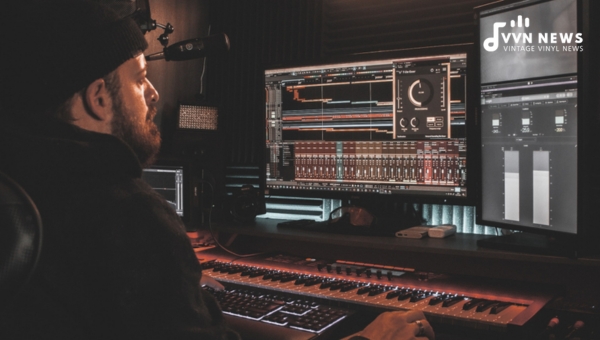
Prioritizing Elements
When working with a mono mix, prioritizing elements is crucial. Understand what you want to stand out in your mix, whether it’s the vocals, the melody, or a specific instrument or sound.
Make this your reference point, building and adjusting all other elements around it.
With mono mixing, everything sits centrally without any perceived separation between left and right speakers; hence priority is all about volume.
The most important elements in your track should be the loudest, with less critical components taking a backseat.
Frequency Balancing
Balancing frequencies should be of paramount focus when you’re crafting a mono mix.
It’s about making sure each element in your mix has its own space across the frequency spectrum; think of it like carving out sonic room where each sound can breathe.
Listening to each element isolated can provide an accurate picture on how they interact on both low and high ends of the frequency spectrum.
Use subtractive EQ to remove frequencies that are clashing and ensure even-handed distribution of sounds.
The cleaner the individual frequencies are in a mono mix, the better – keeping in mind not to overdo it that you lose necessary warmth.
Panning
In mono mixing, panning as we know it (designating individual sounds to left or right speakers) doesn’t technically exist since everything is heard from a singular source.
This doesn’t make it any less important. Although we’re not working with spatial stereo panning here – altering volume levels can simulate panning effects.
By deciding which elements stay at forefront (simulated center) and which ones get tucked behind (simulated sides), we’re indirectly applying the concept of ‘Mono Panning.’
By mastering these three areas – element prioritization, frequency balance, and simulated panning – one can achieve outstanding results while mixing music in mono!
Checking Your Mix in Mono
There’s no denying that stereo adds depth and spatial definition to any piece of music.
Checking your mix in mono can expose problems hidden beneath the layers of a stereo mix.
For instance, it might reveal phase issues between the left and right channels that cause certain sounds to disappear or appear less prominent.
By identifying and resolving these problems in a mono mix, you ensure your song retains its integrity when played on systems that sum to mono — think club PAs, smartphone speakers, or AM radio.
Mono-Check Plugins
Thankfully, checking your mix in mono doesn’t involve complicated procedures or equipment.
Most DAWs provide built-in features or plugins for ‘collapsing’ your stereo mix into mono at the click of a button.
iZotope Ozone 8, for example, brings with it extensive metering options that help identify many common issues when mixing in mono.
Also Read: F Sharp Minor Pentatonic Scale [How To Use In Your Compositions]
A/B Testing Your Mono Mix
A key technique while working on your sound is A/B testing.
You basically switch between your stereo version (A) and its mono counterpart (B) frequently to maintain perspective and ensure the integrity of individual elements within your track.
This way, you can continue achieving depth in stereo while maintaining balance and clarity when condensed to mono.
Remember, achieving a great-sounding stereo mix is far easier when you’ve got your mono mix sounding just right.
As counterintuitive as it seems initially, mixing in mono can be an incredibly essential tool for producing professional-grade audio.
Elevating Your Mix: Combining Stereo and Mono

While each has its distinct advantages, it’s the blend of mono and stereo that truly takes your mix to new heights.
What Does This Mean?
Only very rarely would a track be entirely in mono. The same goes for stereo. Instead, elements within a composition are mixed with varying degrees of mono or stereo characteristics to create a balance.
Mono Elements
Often, critical elements like vocals, kick drum or bass guitar are kept in mono. It ensures these elements sound potent and centered, regardless of playback device.
Stereo Elements
On the other hand, elements like backing vocals, synthesizers or guitar might be panned out in stereo to create a sense of space and depth.
Curating a balance between mono and stereo is an art that comes with practice and keen listening.
Always test your final mix on various audio systems to ensure compatibility and absolute integrity of your sound regardless of whether it’s being heard on club speakers or smartphone earbuds.
Also Read: F Sharp Major Chords [Boost Your Guitar Skills Today]
FAQs About Mono Mixing
How do you mix in mono?
Mixing in mono involves utilizing a ‘mono button’ on your software or hardware mixer. It facilitates mixing all your tracks down to a single channel rather than two.
Does mixing in mono work?
Yes, mixing in mono works quite effectively. It aids in making sure that the mix will sound good on various audio systems, even those that only support one speaker or channel.
Can you mix stereo in mono?
Yes, it is possible to mix stereo recordings into mono by summing the left and right channels together. However, this may result in some loss of spatial information as all audio will be centered.
What is sum to mono on mixer?
“Sum to Mono” is a setting on a mixer that combines the left and right channels into a single channel. This is useful for monitoring mixes on a system with only one speaker!
Should you check your mix in mono?
It’s important to check your mix in mono as it helps find phase issues and assures your mix sounds good even on single-speaker systems like radios and televisions.
Conclusion
In summary, mixing in mono streamlines the process of music production by placing a magnifying glass on any issues that could be obscured by a stereo mix.
It allows you to spot and correct balance irregularities, ensuring your final mix sounds great no matter where it’s played.
Approaching audio production through the lens of mono can elevate your grasp of sound, helping you create more compelling and well-balanced stereo mixes.
Mono isn’t just about simplicity; it’s about refining your attention to sonic detail and discovering new avenues to enhance your mixes.
